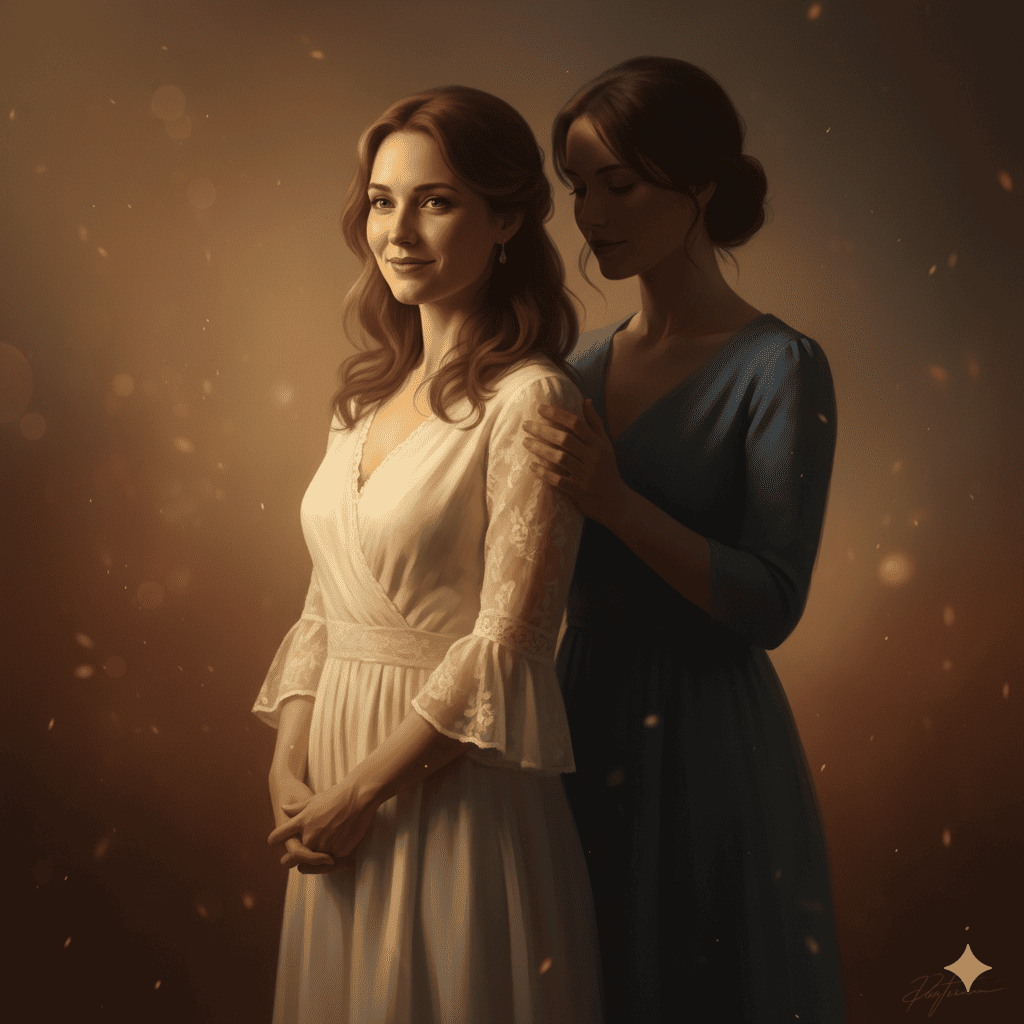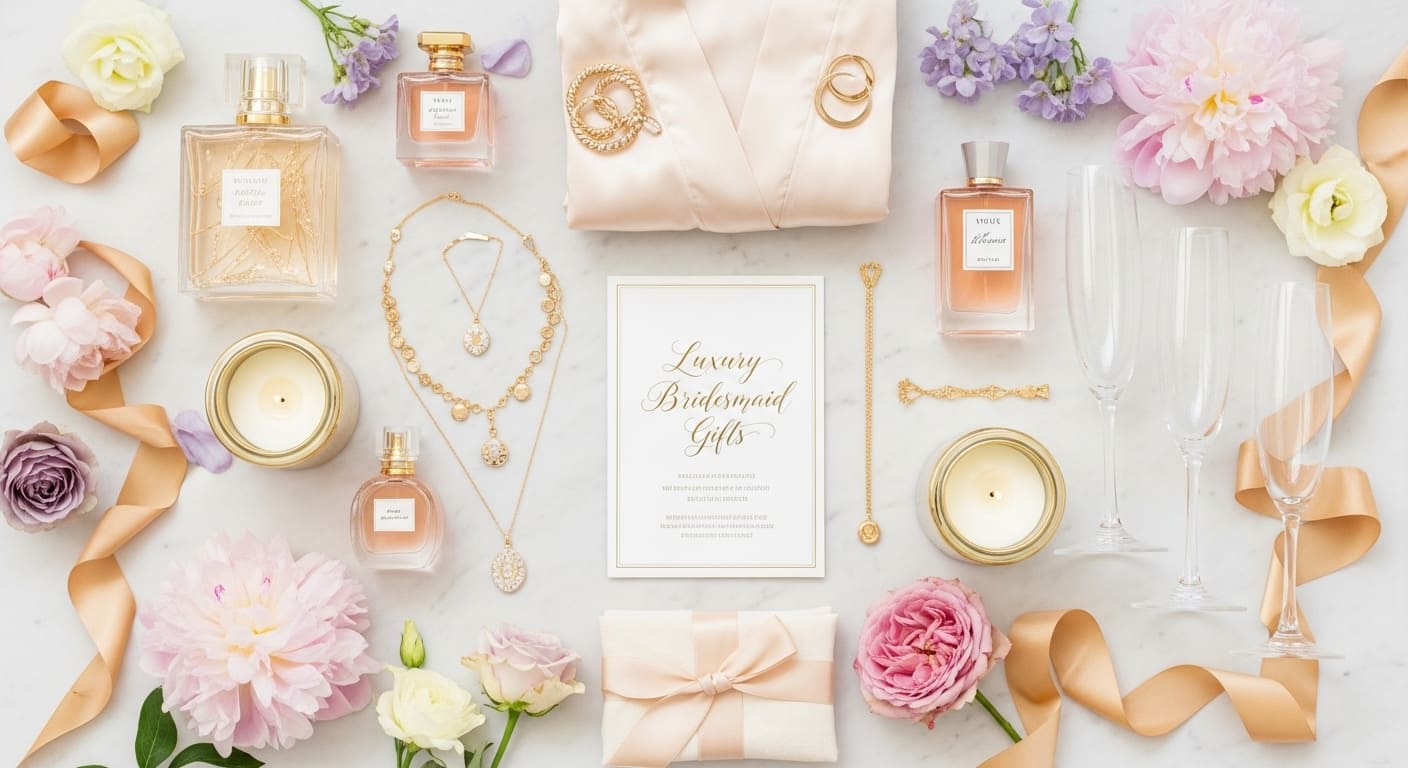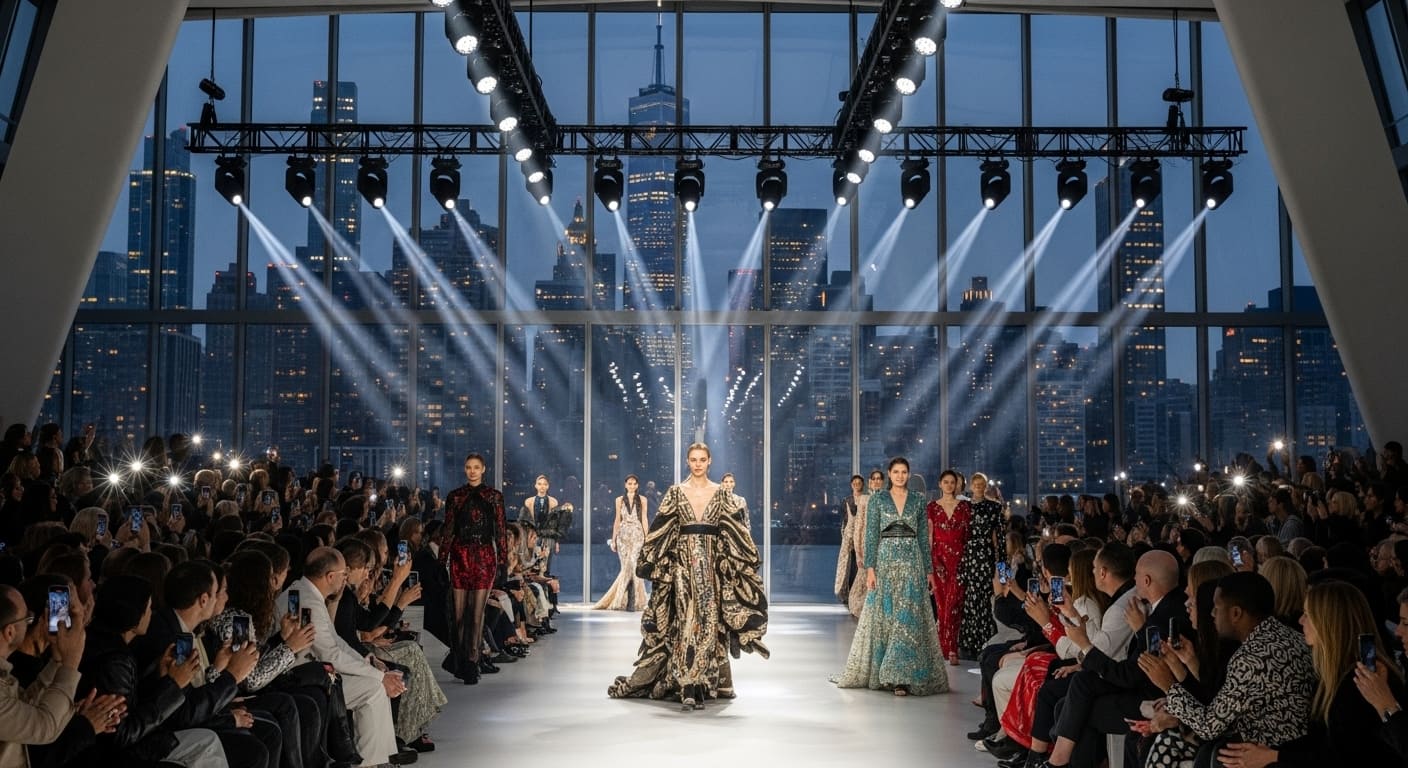Introduction:
Few periods in history capture the imagination quite like the Regency Era fashions of early nineteenth-century England. Marked by refinement, grace and subtle sophistication, this was the time when the style evolved from the opulence of the Georgian era to the delicate simplicity inspired by classical antiquity. The silhouettes, clothing and accessories of this era reflect a changing society – one that balanced tradition with modernity and romantic ideals with social realities.
Today, the fascination with Regency Era fashion is stronger than ever. From literary adaptations such as Pride and Prejudice to contemporary cultural phenomena such as Bridgerton, audiences worldwide remain mesmerized by the beauty, charm and restraint of this remarkable period. This article explores how Regency Era fashion continues to define timeless elegance, with the rise of Regencycore fashion and the influence of early 19th century clothing.
The Graceful world of the Regency era
The Regency period, which lasted from about 1811 to 1820 in Britain, represents little more than a short decade in history. It was a movement – a celebration of culture, intelligence and sophistication. With King George III declared unfit to rule and his son, the Prince Regent (later George IV) assuming power, society entered a new era of sophistication.
London became a center for art, literature and, most importantly, fashion. The social elite attended lavish balls, musical evenings and promenades in Hyde Park, where appearance was everything. Clothes weren’t just about aesthetics; It was a symbol of class, morality and respectability.
The rise of Regency Era fashion brought a shift towards natural beauty, understated elegance and neoclassical inspiration. The heavy brocade and corset extravaganza of the eighteenth century gave way to light muslin dresses and simple, flowing lines that celebrated the natural figure.
Women’s fashion: the language of grace
The wardrobe of women in that period was an expression of purity and sophistication. The most iconic feature of Regency Era fashion was the empire waist dress – a design where the waist sat just below the bust, creating an elongated, statuesque look reminiscent of Greek goddesses.
These dresses were often made from soft fabrics such as muslin, silk and fine cotton, in pastel colors such as ivory, light blue or blush pink. They floated rather than stuck, embodying the era’s understanding of simplicity. The influence of clothing in the early 19th century emphasized grace over grandeur, which fit perfectly with social ideals of modesty and virtue.
Accessories completed the look:
• Hoods shielded women’s faces and added attractiveness.
• Gloves were a symbol of class and femininity.
• Reticules (small handbags) became necessary, as dresses no longer had pockets.
• Jewellery was delicate – pearls, cameos and small lockets which were often worn close to the heart.
The hairstyles complemented the soft silhouette. Women often wear face-framing curls with simple updos decorated with ribbons or floral accents. These details were inspired by ancient Greece and Rome, combining Regency Era fashion with classical ideals.
Men’s Fashion: The Age of Gentlemen
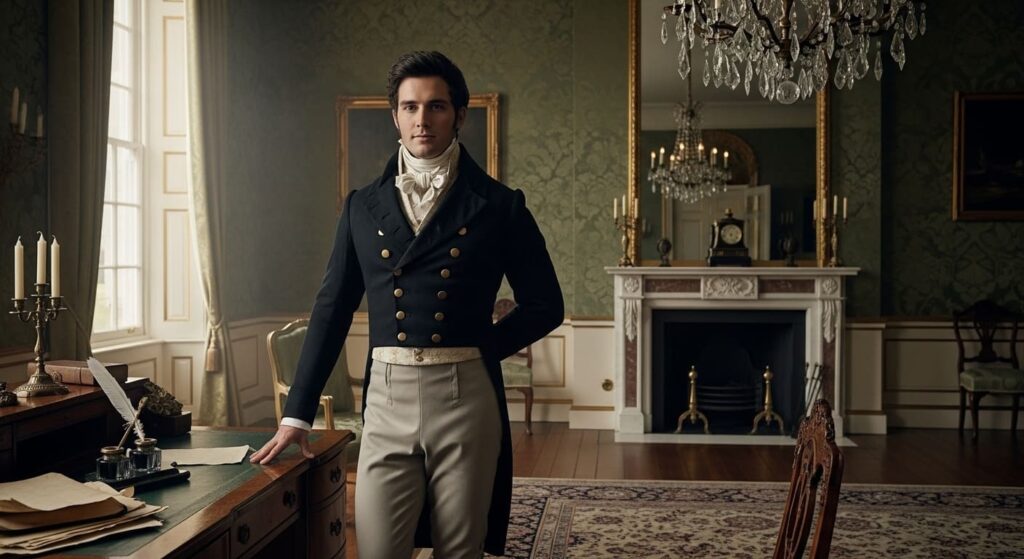
While women’s fashion embraced flow and grace, men’s style during the Regency period took on sophisticated structure and restraint. The quintessential Regency gentleman dressed to convey discipline, intelligence and confidence.
The style icon of the era, Beau Brummell, redefined masculine fashion by promoting impeccable tailoring and cleanliness over ornamentation. His influence shaped Regency Era men’s fashion and laid the foundation for modern menswear.
Typical attire includes:
• Tailcoats with high collars and long tails emphasize attitude and elegance.
• Waistcoasts in subtle colors or patterned fabrics for sophisticated contrast.
• Breeches or trousers, the latter gradually replacing the former as a sign of progress.
• Cravats, intricately tied scarves that showed one’s taste and patience.
Men’s clothing at the beginning of the 19th century marked the change towards minimalism – dark colours, quality fabrics and perfect fit. Shoes also evolved, with polished shoes replacing shoes with ornate buckles. The result was a style that celebrated confidence without being pretentious.
The art of fabric, color and detail
At the heart of Regency Era fashion is a philosophy of restraint. Fabrics such as muslin, lawn, silk and satin became the cornerstone of female beauty. The color palette reflected the calm: whites and creams dominated daytime wear, while soft blues, lilacs and golds appeared for evening occasions.
Menswear leaned towards earth tones – navy, brown, gray and black – reflecting a sense of dignity and practicality. The intricate embroidery and lace work as well as the sophistication of the textiles emphasized craftsmanship without overpowering the wearer.
This simple luxury made Regency Era fashion timeless. It emphasized texture, shape and fine details – principles that still govern high fashion today.
Fashion, class and identity
Clothing during the Regency era was about much more than self-expression; It was social currency. The elite used dress as a means of distinguishing themselves from the middle and working classes.
For women, a pristine white muslin dress signified purity and comfort – proof that one did not participate in childbirth. For men, a well-tailored coat and spotless collar spoke volumes about social status and sophistication.
However, the democratization of in the early 19th century clothing began to change this dynamic. Industrial advances made clothing more accessible, and the emerging middle class adopted the same styles as the elite class. The result was a gradual blending of class boundaries through shared aesthetic values.
Nevertheless, fashion was a dialogue between appearance and ambitions – a dance between who you are and who you want to be.
Influence of literature and art
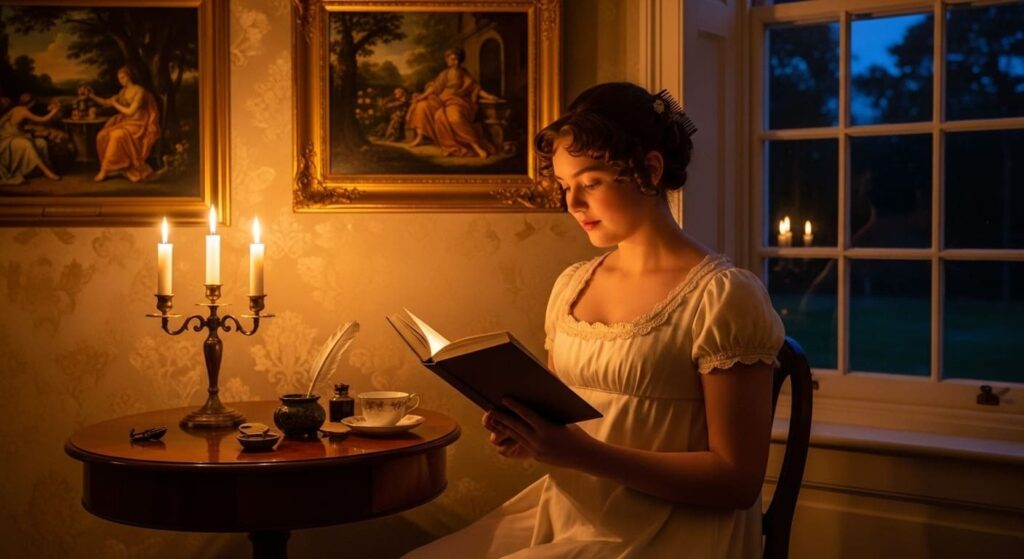
Art and literature deeply influenced Regency Era fashion. Writers such as Jane Austen immortalized social mores of dress, courtship and etiquette. In her novels, clothes often symbolize character traits – from Elizabeth Bennet’s modesty to Caroline Bingley’s vanity.
Illustrators and miniature artists such as Thomas Lawrence captured the soft draperies and fine details of the time, while fashion plates in publications such as La Belle Assemblée disseminated the latest trends among society women.
The artistic movement of Neoclassicism also shaped clothing design, as Europe looked to the past for inspiration after the chaos of the French Revolution. The purity of classical forms became a metaphor for moral virtue and emotional restraint—key values reflected in Regency Era fashion.
The Revival: Regencycore Fashion
In recent years, regencycore fashion has rekindled a global fascination with this sophisticated era. Inspired by period dramas and social media aesthetics, the modern revival mixes historical shadows with contemporary style.
Corset style tops, puff sleeves, beaded accessories and empire waist dresses dominate today’s runways and online trends. Designers are reinterpreting Regency Era fashion through sustainable fabrics, pastel colors and inclusive sizes – making the beauty of the past accessible to all.
Platforms like TikTok and Pinterest have turned regencycore fashion into a cultural movement. It’s not just dressing up; It’s about confidence, romance and embracing individuality – the same values that were celebrated two centuries ago.
What makes this revival attractive is its mix of nostalgia and modern feminism. Women today embrace the visual elegance of early 19th century clothing while asserting their independence, creativity, and power.
Lasting impact on modern style
Several trends from Regency Era fashion continue to shape modern clothing:
• Empire waists are still a favorite in bridal and evening wear.
• The blouse with a high neck and puffed sleeves reflect period details.
• Tailored menswear traces its lineage directly to Regency design.
Even today’s minimalist aesthetic, which values clean lines and subtle luxury, owes much to the sensibilities of the time. Designers such as Vivienne Westwood, Erdem and Alexander McQueen have drawn inspiration from Regency Era fashion, proving its continuing creative relevance.
Furthermore, the cultural appeal of regencycore fashion lies in its escapism – offering a romantic antidote to the fast pace of modern life. It reminds us that style can be beautiful, expressive and rooted in history.
Social symbolism and feminine ideals
Beyond beauty, Regency Era fashion carried deep social symbolism. Women’s delicate dresses reflected the ideal of virtue, but they limited women to expectations of delicacy and modesty. Nevertheless, the simple dress paradoxically gave women new freedom of movement, both physically and socially.
As society evolved, clothing became a subtle tool for self-expression. The flowing fabrics of early 19th-century clothing allowed women to navigate a changing world—one in which literature, intelligence, and moral virtue began to redefine feminine power.
Thus, Regency Era fashion represents both restriction and liberation—a complex balance that continues to resonate in today’s discussions of gender and identity.
Conclusion:
More than two hundred years later, Regency Era fashion still represents the essence of elegance: balance, simplicity and confidence. Its influence extends from literature and cinema to modern design and everyday clothing.
The beauty of early 19th century clothing lies not only in fabric and silhouette, but in philosophy – a belief that true style expresses harmony between the individual and the world around him.
In the twenty-first century, Regencycore fashion revives the same spirit. It reminds us that elegance is not about extravagance, but about authenticity, balance and subtle power. The allure of Regency Era fashion endures because it speaks to something timeless: the desire to feel beautiful, confident, and timeless.


